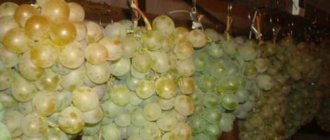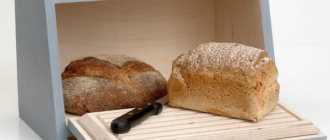Package
Under no circumstances should supplies be stored in opened original packaging. Oxygen ingestion leads to fat oxidation. As a result, the cereal spoils and acquires a rancid taste. If there is no special storage container, the factory bags must be tightly closed with a clothespin or clamp.
The ideal container for cereal is glass. These can be jars or containers with tight lids.
All other materials have significant disadvantages:
- Plastic containers quickly become cloudy, and flour (cereal dust) concentrates on them.
- In plastic bags, the grain “suffocates”, becoming tasteless. In addition, it will not be difficult for pests to chew through such a package.
- Metal boxes can quickly rust and deteriorate without providing proper sealing. Any metal container is opaque and not very convenient to use.
- Using perforated bags can result in grain becoming damp or infested with bugs.
It is recommended to indicate on the container the date of manufacture and expiration date of the cereal, marked on the original packaging.
See also:
Self-isolation rules for coronavirus in Moscow and the world in 2020
What can you store ideas in?
Some housewives specifically purchase beautiful containers and jars for cereals. Only most people store in original bags and boxes. It’s no wonder that moths appear from time to time, products disappear and spoil. Polyethylene is generally the worst packaging for cereals. There are plenty of more attractive containers. It's time to tell you what is the best way to store cereals at home.
Ceramic containers
Ceramics is one of the best materials for cereals. Conveniently stored in containers. They often have a plastic lid. When purchasing, be sure to check the reliability. It should close tightly. Then nothing will harm the reserves.
We also pay attention to volume. Kits often contain many small containers. Definitely don’t put pasta or buckwheat in them. It is better to buy separately in a container with a volume of at least a liter.
Pros of ceramic containers:
- protect from moisture;
- do not allow light to pass through;
- hygienic material;
- nice, good looking.
Minuses:
- are expensive;
- you need to select the size;
- heavy weight.
The weight of a liter ceramic container can reach 400-600 grams. Depends on the thickness of the walls and the applied decor. Plus the lid has weight. A dozen filled containers is a big load for a hanging cabinet.
In stores you can find ceramic containers with vacuum lids. They are not suitable for cereals. Cereals must “breathe”. For this purpose, ventilation is carried out periodically.
Plastic containers
We can talk endlessly about the dangers of plastic. Only it is still actively used. It is convenient to store cereals in containers; the product is reliably protected from foreign odors. You can buy it at any hardware store. There are just some shortcomings too. It is advisable to choose dark plastic that does not transmit light. Only more often translucent containers are sold on store shelves.
Advantages of plastic containers:
- cheapness;
- light weight;
- different shapes, sizes;
- protect from moisture
Minuses:
- cheap plastic is dangerous;
- the material absorbs odors;
- boring, “cheap” designs.
Metal cans
Metal cans were once a favorite. In every kitchen there were “matryoshka dolls” of different sizes and shapes. Nowadays such dishes are losing their relevance. High-quality coated containers are expensive. Cheap analogues made of tin rust and turn yellow over time, as they are in a damp room.
Metal cans for storing cereals
Advantages of metal containers:
- attractive appearance;
- protect from moisture;
- do not allow light to pass through.
Minuses:
- may rust;
- small choice;
- high price.
Glass jars
The most practical, safe and environmentally friendly material is glass. But not every housewife is ready to store cereals in ordinary jars. I want something cute. You can look for attractive containers or decorate the container with a beautiful lid. Sometimes they do decoupage, wrap it in fabric, you can look for other decor ideas. This technique helps protect the cereal from light and preserve its properties.
Pros of a glass jar:
- safety;
- reliable protection from odors and moisture;
- different sizes;
- availability.
Minuses:
- transmits light;
- heavy weight;
- may break.
Some shortcomings are easy to fix. For example, we leave glass containers in a closed kitchen cabinet. No additional protection is required. Glass containers are also convenient for sending excess cereal to the basement. This material is reliably protected from insects and rodents.
Warming up and treating insects
To protect yourself from pest invasion, it is recommended to heat the cereals in the oven at a temperature of 80°C. To destroy possible insect larvae, 10 minutes of calcination will be enough. A microwave oven is also suitable for these purposes. You will need to heat the cereal in it for 5 minutes.
By the way, the heating procedure will not only disinfect the cereal, but also make it more tasty.
To prevent infection by bugs, you can turn to folk remedies. Place one of the following items in the cereal jar:
- a piece of foil,
- garlic clove,
- dry lemon zest;
- gauze bag with salt;
- Bay leaf.
Dichlorvos will save you from existing pests. However, you need to avoid getting it on food and thoroughly rinse the shelves after spraying.
Can it be stored in the refrigerator?
A pressing question is whether it is possible to store various cereals in the refrigerator. The temperature is quite suitable. But there is not always room for a can of buckwheat or a bag of flour. In addition, it is better to store at a temperature closer to +15 degrees. Regular cereals are fine in normal household conditions. We choose a cabinet away from the sink, stove, and other heating devices. And we save ourselves from unnecessary worries.
If you want to store it in the refrigerator, send rare species there. The cereal will not go rancid and its beneficial properties will be retained. It’s also a shame if food moths infest expensive cereals. Feel free to put quinoa, amaranth, rare varieties of rice, bulgur, teff, couscous, spelled in the refrigerator.
Systematic ventilation and inspection
It is necessary to ventilate not only the cabinet, but also the cans of cereal themselves. Once a week, it is advisable to open the containers for 5-10 minutes.
Cereals need to be checked from time to time for the presence of pests and their larvae. The stored product should not have an unusual odor (musty, putrid, moldy), as well as a sour or rancid taste.
If some supplies begin to acquire a foreign smell or taste, but the changes are minor, this product should be used first.
Cereals can be stored for several months or longer, but only under certain conditions. These include maintaining the desired temperature and humidity, choosing the right location and container for storage. Cereals also need to be protected from insects, periodically inspect cabinets and do not forget about ventilation.
How to understand that cereal is unfit for consumption
At home, expired, spoiled cereals are determined by organoleptic indicators. It’s enough to smell, touch, and look carefully. Any housewife can handle this.
Storing cereals in glass jars
Characteristics of the spoiled product:
- crumbs, cracks. A characteristic sign of spoiled pasta;
- stuck together lumps, no friability. Signal about moisture ingress. Sometimes the cause is pests;
- musty, moldy smell. We smell it immediately after opening;
- color change. Gray, greenish, and less often black shades appear.
There is no point in washing spoiled cereals, drying them, trying to fry them, or storing them further. Removing plaque does not solve the problem. The grain is damaged inside. When cooking, the temperature will rise, unpleasant aromas will reveal themselves with renewed vigor.
Expiration dates
It is recommended to store cereals in the same conditions. However, their expiration dates differ. Porridges that boil quickly can be stored for 6-12 months.
See also
How long can raw eggs be stored in the refrigerator, methods and timing, how to extend
Cereals
The shelf life of this product does not exceed 4-5 months.
Millet
This product can be stored for up to 9 months. In summer, the shelf life is reduced to six months.
Semolina and corn flour
These products are allowed to be consumed for 8-9 months.
Wheat of various processing
Cereals such as bulgur or artek can be stored for 12-14 months.
Barley grits
Such cereals can be stored for 14-16 months.
Barley, buckwheat, polished rice
These products retain their freshness perfectly for 18 months.
Split peas and buckwheat
Such products store well for 20 months.
Polished peas
Its shelf life is 24 months.
Parboiled rice
This product can maintain its freshness for 2.5 years.
Secret sliding panel
It is not necessary to put your culinary supplies on public display - they can be disguised. For example, by building a retractable shelf into a kitchen set, which will look like an ordinary decorative panel.
This method is quite unusual, but requires significant costs: you will have to purchase a custom-made kitchen. However, the final result is worth it - few people can hold back an exclamation of surprise when they see how you take out pasta or seasonings for it from the seemingly solid wall of the set.
Rack with pull-out shelves
A small narrow cabinet with pull-out shelves will also look original. You can see these in the supermarket. Make several large drawers for cereals and pasta, a couple of smaller ones for coffee and tea, and very tiny ones for spices.
Such a cabinet, especially if it is designed to match a kitchen set, will look organic. Pull-out shelves make it easier to find the products you need and organize the arrangement of products.
If you are not a fan of large stocks, you can make such a rack in the form of a small decorative cabinet placed on the kitchen panel or built into the set. In any case, such shelves are convenient and easy to implement.
Alchemy laboratory
Probably, almost everyone dreamed of becoming a wizard in childhood. Now you can at least partially realize your dreams! Small narrow test tubes with spices and wide flasks with cereals and pasta will look very impressive on a hanging shelf.
You can also add mystery bottles of vinegar and vegetable oils. This design looks very interesting and mysterious. However, be careful not to hang it over the stove, even if your beakers are heat-resistant: constant heating does not improve the properties of the food.
An interesting technique: Containers with glass of different colors can add originality to an already interesting idea. If you decide to place vegetable oils on this shelf, make them aromatic - add herbs or berries to them. This will make your shelf look even more like the shelf of a wise wizard.











